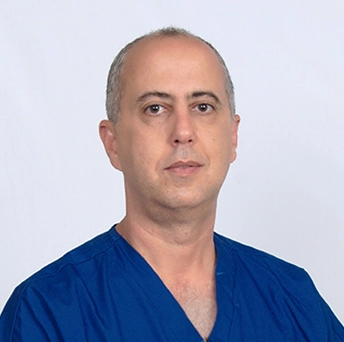Beyond the “Frozen Face”: 10 Dermal Filler Myths Debunked by Experts
What’s behind the introduction: stop believing filler rumors
Stop believing the filler rumors! This article discusses the 10 eermal filler myths debunked by experts.
We debunk 10 major myths about dermal fillers, covering natural results, pain, safety, and permanence. Get the expert facts before your treatment. Click to learn the truth!
In today’s world of social media filters and before/after reels, dermal fillers are often misunderstood. Many myths surround them, from fears of appearing fake to concerns about safety, permanence, and the potential for pain.
But the truth is more nuanced, and essentially reassuring.
This article aims to set the record straight. We’ll tackle the 10 biggest myths about dermal fillers, drawing on expert evidence, clinical insights, and patient experiences.
Along the way, we’ll weave in essential topics like dermal filler safety facts, permanent dermal fillers, filler migration explained, dissolvable dermal fillers, natural looking filler results, common filler side effects, filler swelling and bruising, filler injection pain, dermal filler maintenance cost, best type of dermal filler, filler aftercare instructions, how long filler lasts, non surgical facelift myth, filler before and after, fillers for younger people, choosing a filler injector, filler stretching the skin, fillers for lip augmentation, and filler longevity factors.
By the end, you’ll be able to separate hype from reality, so you can make confident decisions about whether, when, and where to get rellenos.
Índice
1. Myth 1: Do fillers always look fake or unnatural?
2. Myth 2: Are dermal fillers permanent?
3. Myth 3: Are injectables only for older people?
4. Myth 4: Are dermal fillers and Botox the same thing?
5. Myth 5: Can you become “addicted” to fillers?
6. Myth 6: Do fillers stretch the skin and worsen aging?
7. Myth 7: Can anyone inject fillers safely?
8. Myth 8: Does getting fillers always hurt significantly?
9. Myth 9: Are immediate dramatic results a promise?
10. Myth 10: Will I look frozen or lose facial expression?
11. Additional myths: stuck with filler, overuse, worse after wear‑off, limited uses
12. The science: dissolvable fillers, filler migration explained, permanent dermal fillers
13. Cost, maintenance, and choosing a provider
14. Aftercare, risks, and side effects: swelling, bruising, safety, downtime
15. Preguntas más frecuentes (FAQ)
16. Conclusión
17. Referencias
1. Myth 1: Do fillers always look fake or unnatural?
La verdad: Overfilling can lead to unnatural results, but skilled, experienced injectors can provide natural-looking enhancements that restore volume and balance without exaggeration.
One of the most persistent beliefs is that dermal fillers always yield “fake” or “puffy” outcomes.
People fear the “duck lips” or overly inflated cheeks often seen in tabloids or the result of botched injectables. However, the key variable is not the filler, but the technique, the amount, and the aesthetic judgment of the injector.
When placed thoughtfully, filler can subtly restore lost volume and improve facial armonía.
In fact, achieving natural-looking filler results is a significant goal in reputable aesthetic practice. A good injector will consider facial proportions, age, bone structure, and movement to sculpt rather than distort.
Modern fillers, such as hyaluronic acid gels, allow for layering, blending, and fine-tuning to achieve seamless transitions.
It’s also worth noting that some “fake-looking” cases occur because patients pressure injectors into overcorrection or select bargain clinics. If you choose a skilled provider, the odds of resultados naturales are much higher.
Always ask to see filler before and after images from that provider.
2. Myth 2: Are dermal fillers permanent?
La verdad: Most hyaluronic acid (HA) fillers are temporary and designed to be absorbed by the body over time, lasting from 6–24 months (or somewhat longer in optimal conditions).
A common fear is that once you get fillers, you’re stuck with them forever. But in truth, one of the safety features of most fillers is their temporality.
Dissolvable dermal fillers, especially those based on hyaluronic acid, are biodegradable and metabolized by the body. The U.S. FDA classifies many dermal fillers as medical devices whose effects are temporary.
Most HA fillers last between 6 and 18 months, depending on the product, area injected, metabolism, and other factors. Some longer‑lasting or biostimulatory fillers (e.g., calcium hydroxylapatite, PLLA) may persist up to 24 months or more.
There are a few permanent dermal fillers (e.g., PMMA microspheres) like Artefill (now Bellafill) that provide very long-term scaffolding. But these carry a higher risk of long-term complications (nodules, migration) and are less commonly used in contemporary aesthetic practice.
Most practitioners prefer reversible, temporary fillers with safer profiles.
Because fillers fade over time, dermal filler maintenance costs become a factor; touch-up visits are part of the long-term plan. But you’re not locked in: if you stop, your cara gradually returns to its prior state without dependency.
3. Myth 3: Are injectables only for older people?
La verdad: Younger people use fillers for subtle enhancements, such as plumping lips or creating a more defined jawline.
Many believe dermal fillers are reserved for those with advanced aging. However, fillers for younger people are increasingly common, used for preventive or enhancement purposes rather than corrective aging.
In someone in their late 20s or early 30s, a small amount of filler can preserve facial structure, soften early lines, or provide volume in thinning areas.
Younger patients may use fillers to address lip augmentation, cheek contouring, chin definition, or even subtle corrections, such as smoothing a shallow scar or under-eye hollows. These non-surgical facelift fillers (when done conservatively) can delay deeper creases from forming.
Additionally, injecting early but cautiously may reduce the need for larger corrections later, helping to maintain natural-looking dermal filler outcomes over time. Of course, candidacy, piel quality, and expectations matter.
Younger clients should be realistic: fillers won’t stop time, but they can offer a modest boost without noticeable change.
4. Myth 4: Are dermal fillers and Botox the same thing?
La verdad: Fillers add volume, while Botox (a neuromodulator) relaxes muscles. They serve different aesthetic purposes.
This is one of the most confusing myths: people often lump dermal fillers vs Botox together, but they are fundamentally different. Botox (and other neurotoxins) temporarily paralyze or relax muscles to prevent dynamic wrinkles (patas de gallo, forehead lines).
Meanwhile, dermal fillers are volumizing agents that restore structure, lift, or smooth static arrugas and hollow areas.
So, while you might use Botox to treat lines caused by muscle movement, fillers are more suitable for deep wrinkles, supplementing volume loss, contouring, or filling under-eye hollows, lips, and cheeks.
Many practitioners combine both treatments in what’s sometimes called a “liquid facelift”, addressing both movement and volume.
Because of this difference, the myths about “freezing” the face often misapply Botox fears to fillers. We’ll get to that.
But be clear: they work differently, have different risks, and often complement each other.
5. Myth 5: Can you become “addicted” to fillers?
La verdad: Fillers are not addictive. If you stop treatment, your face returns to its natural aging process without harm.
Some people worry that once they try fillers, they’ll become dependent, needing more and more to feel “normal.” In reality, there’s no biological addiction to dermal fillers. When you stop, the filler gradually dissolves (for HA types), and your face returns to baseline over time.
However, psychologically, some may develop a desire to maintain enhancements, especially if they like their fuller appearance. The critical distinction is that the body is not dependent on the filler, and there is no withdrawal.
You can pause or stop without medical harm.
That said, consistency helps maintain results. If you allow too long between injections, you may see a gradual return of volume loss, which some interpret as “sagging” or worse-than-before, but that is due to your original aging, not filler dependency.
6. Myth 6: Do fillers stretch the skin and worsen aging?
La verdad: Fillers add volume, support the skin, and some can even estimular el colágeno production, which helps the skin appear firmer rather than stretch it.
A widespread myth is that repeatedly injecting filler will stretch or loosen skin, making you look worse long-term. But fillers do not behave like balloons. Instead, they provide internal support to soft tissues.
When used appropriately, they can counteract volume loss that contributes to sagging.
In fact, some fillers stimulate collagen over time. In that sense, they may improve firmness, indirectly resisting the sagging process.
En skin around the filler doesn’t automatically stretch; it’s more accurate to say that if you repeatedly overfill in large amounts, the overlying tissues may adapt to accommodate the filler.
However, with a balanced technique, this is rare.
Moreover, once fillers dissolve, the skin doesn’t collapse or sag beyond its baseline; your natural aging trajectory resumes. The notion that filler stretches the skin is more myth than fact, mainly when used judiciously.
7. Myth 7: Can anyone inject fillers safely?
La verdad: Dermal filler treatments should only be performed by qualified and experienced medical professionals.
One of the most dangerous myths is that “anyone” – nurses, aestheticians, or nonmedical personnel – can inject fillers safely. In truth, precise knowledge of facial anatomy, blood vessels, planes of injection, and complication management is critical.
The FDA warns that improperly placed filler can lead to severe complications like vascular occlusion, necrosis (tissue death), or even blindness. Only properly trained, credentialed injectors should administer tratamientos de relleno.
Many professional organizations require injectors to be licensed physicians, dermatologists, plastic surgeons, or supervised medical providers.
A skilled injector also understands how to minimize filler migration (i.e., movement of the product from the intended site) and how to respond to emergencies.
When choosing a practitioner, ask about board certifications, injection training, case experience, before/after gallery, and complication protocols.
8. Myth 8: Does getting fillers always hurt significantly?
La verdad: Topical numbing cream is often applied, and many fillers contain lidocaine, a numbing medication, making the procedure quite tolerable.
Many potential patients put off filler treatments due to fear: “Do fillers hurt?”
In reality, today’s fillers often include lidocaine (a numbing agent) molded into the gel. Additionally, trained injectors use topical anesthetics or apply ice before injection to minimize discomfort.
You may experience mild pressure, pinching, or minor stings at the entry sites, but most patients rate the pain as low to moderate. More sensitive areas (e.g., lip borders) may feel more, but numbing helps.
Over the course of multiple puntos de inyección, the discomfort tends to be transient.
Pain also depends on the injector’s technique (slow injection, small gauge needles, proper depth). Many people compare the sensation to a series of small pinches.
After the procedure, filler injection pain subsides quickly, and the mild discomfort is usually less than expected.
9. Myth 9: Are immediate dramatic results a promise?
La verdad: While some initial results may be visible, dermal fillers can take 1–2 weeks (and sometimes longer) to settle and reveal their final effect fully.
Another common misconception is that what you see immediately after injection is your “final result.”
In fact, many fillers cause temporary swelling, bruising, and settling, and volumes may shift slightly over the first few days to weeks.
Initial swelling can exaggerate the effect, and the gel needs time to integrate into tissues. After approximately 7–14 days (sometimes up to 30 days), the filler “beds in,” and the final, natural-looking dermal filler outcome becomes clear.
Some biostimulatory fillers (e.g., PLLA, Radiesse) exhibit gradual improvement over several months as colágeno accumulates. So, patience is essential.
If someone promises you a dramatic instant transformation, that’s a red flag.
10. Myth 10: Will I look “frozen” or lose facial expression?
La verdad: This is a misunderstanding more often associated with excessive anti‑wrinkle injections. Fillers work on volume, not muscle movement, so your ability to make natural facial expressions is retained.
Many confuse filler with Botox. The “frozen face” is a side effect of neuromodulators when misused, not fillers.
Fillers do not paralyze muscles; they restore support and volume underneath the skin. So your facial expressions remain intact.
If you ever notice stiffness or restricted movement after filler, it’s likely from overfilling or edema, and not because filler affects the muscle. A reputable injector will prioritize preserving motion and expression. Your face should still reflect emotion.
Thus, the myth that fillers alone cause a frozen look is unfounded, especially when injections are well planned.
11. Additional myths: stuck with filler, overuse, worse after wear‑off, limited uses
Over and above the top 10, there are extra myths worth busting:
- Myth 5 (alternate): You will be stuck with filler you don’t like.
- Because most fillers are HA-based, you can dissolve them with hyaluronidase, a licensed enzyme that breaks down HA in minutes to hours. This serves as a safety net in case you dislike the outcome.
- Myth 8 (alternate): More filler always equals better results.
- Overcorrection often leads to lumps, migration, and unnatural contours. Less is often more; a skilled injector aims for subtle balance, not volumetric overload.
- Myth: You’ll look worse when fillers wear off.
- Some think once filler leaves, the face sags more than before. That’s misleading; when fillers fade, your face returns to its baseline level of aging, rather than accelerating the collapse.
- Mito: Fillers are only for lips and wrinkles.
- Fillers are versatile and can be used for facial contouring, temples, under-eye hollows, the chin, nose (non-surgical rhinoplasty), and even for filling in cicatrices de acné in some cases.
These additional myths often stem from misinformation or poor experiences in bargain clinics. A good consultation should address them proactively.
12. The science: dissolvable fillers, filler migration explained, permanent dermal fillers
To fully understand filler myths, it is helpful to delve into the science behind them.
Dissolvable dermal fillers & hyaluronic acid filler myths
Most modern fillers are based on hyaluronic acid, a naturally occurring sugar molecule found in the skin. Because your body already uses and breaks down HA, these fillers are biocompatible and reversible.
The enzyme hyaluronidase can dissolve HA filler safely if needed.
Filler migration explained
One concern patients hear is: “Will my filler move to unintended areas?” Mild migration is possible, particularly in highly dynamic zones or when excessive amounts are injected superficially.
But with proper technique and injection depth, migration is rare. A good provider will strategize to minimize movement by anchoring and layering wisely.
Permanent dermal fillers
A small category of fillers, such as PMMA microspheres, is permanent or semi‑permanent. These create a scaffold in tissues, allowing your body to build collagen around them.
However, their permanence comes with risk, including nodules, difficulty managing complications, and limited reversibility. Hence, many modern practices prefer reversible HA or bio‑stimulatory fillers.
Longevity factors: how long filler lasts
Multiple variables influence duration, including the type of filler, the area injected (lip areas move more, so they break down faster), metabolic rate, lifestyle factors (such as sun exposure and smoking), and technique. Some fillers are engineered to last longer via crosslinking.
Still, none are truly permanent (except those rare PMMA types).
In short, your filler is not permanent, migration is minimal when administered properly, and the best type depends on your goals and anatomy.
13. Cost, maintenance, and choosing a provider
Understanding myths also means addressing dermal filler maintenance coste, frequency, and how to choose your injector.
Cost & maintenance
Since most fillers are temporary, you’ll likely return for touch-ups. The cost depends on the brand, syringe volume, region, and the area being injected. Some areas require more product.
Planning for maintenance (every 6–18 months) is realistic for achieving long-term results.
Why is cheapest not always best
If a provider’s price is extremely low, you may be dealing with a counterfeit product, insufficient skills, or inadequate safety protocols. The cost difference often reflects factors such as training, product quality, liability insurance, and facility standards.
Choosing a filler injector
- Check credentials: board-certified dermatologist, plastic surgeon, or experienced injector
- Ask to see before/after photos (real patients)
- Inquire about their complication history and protocols
- Ask what the best type of dermal filler is and why
- Ask about patient reviews, follow-up care, and whether they carry hyaluronidase
- Ensure they provide full consultation, anatomical mapping, and consent
This ensures you’re not falling victim to myths or risky practices.
14. Aftercare, risks, and side effects: swelling, bruising, safety, downtime
Even with a perfect procedure, some side effects and aftercare factors are real. Let’s address them:
Filler swelling and bruising
These are among the common side effects of fillers, and they are usually mild and temporary. Expect some puffiness, redness, or bruising at injection sites: cold compresses, arnica, and gentle care help.
Most swelling subsides within a few days; however, bruises may take one to two weeks to fade.
Downtime & recovery instructions
You generally can resume light activity immediately. Strenuous exercise, heavy lifting, or pressure on treated areas should be avoided for 24–48 hours.
Avoid touching or massaging the sites. Use filler aftercare instructions like sleeping with head elevated, avoiding extremes in temperature, and avoiding alcohol or blood-thinners temporarily.
Risks and complications
While filler is generally safe, risks exist, including infection, asymmetry, lumpiness, nodule formation, allergic reactions, vascular occlusion, and, in extreme cases, tissue necrosis or blindness if injected into vessels. The single worst myth is that fillers are risk-free.
They are medical procedures and must be treated as such.
Managing complications
A qualified injector knows how to detect vascular compromise early (blanching, severe pain) and use hyaluronidase or other interventions. If you experience intense pain, changes in color, or vision disturbances, seek immediate medical attention.
Long-term considerations
Repeated injections over many years are generally safe if administered judiciously. Filler longevity factors (metabolism, salud de la piel, sun exposure) play a role in how often you’re treated.
By understanding aftercare, side effects, and safety, you empower yourself to make informed decisions, rather than being misled by myths.
15. Frequently Asked Questions (FAQs) about 10 Dermal Filler Myths Debunked by Experts
Q1. Where should you never get fillers?
Respuesta concisa: Never inject fillers into the arteries, eyelids, or unapproved body areas like the breasts or buttocks.
Respuesta detallada: The FDA explicitly warns against injecting filler into specific areas, such as the breasts or buttocks, due to risks of tissue damage, severe complications, or disfigurement. Injecting too superficially or into blood vessels, especially around the nose, glabella, or orbit, can cause vascular occlusion, skin necrosis, or even blindness.
Always use a trained medical injector who understands prohibited zones and safe injection prácticas.
Q2. What don’t they tell you about fillers?
Respuesta concisa: They may spin marketing stories, but do not mention that swelling, bruising, asymmetry, or reversals are possible.
Respuesta detallada: Clinics often focus on dramatic before-and-after photos, minimizing downtime, or achieving rapid results, but may underplay risks such as migration, unevenness, temporary discomfort, or the need for corrective revisions. Also, the “frozen face” myth is misused; you won’t lose expression from filler alone.
You need to ask tough questions about safety, provider skill, complication plans, and how your anatomy might influence outcomes.
Q3. Are fillers bad for you long-term?
Respuesta concisa: No. When done by reputable providers using FDA-approved products, the long-term risks are low.
Respuesta detallada: Decades of clinical use show that approved dermal fillers (especially HA compounds) have good safety profiles when placed correctly. That said, overuse, poor técnica de inyección, or repeated errors over time can raise risks of scarring, nodules, or tissue changes.
Monitoring, moderation, and selecting reputable providers can mitigate long-term harm.
Q4. How quickly can I get my HA filler dissolved if I’m unhappy with the results?
Respuesta concisa: Hyaluronidase can dissolve HA filler within minutes to hours after injection.
Respuesta detallada: If you’re unhappy with HA-based results, most providers can inject hyaluronidase to break down the filler rapidly. That said, the time required for dissolution depends on the depth, volume, and technique used.
Some residual swelling or degradation may linger for a day or two, but you’ll typically see significant change quickly.
Q5. Will my lips look like “duck lips” or obviously overfilled after one syringe?
Respuesta concisa: Not if your injector is skilled, they’ll layer gradually and focus on proportion.
Respuesta detallada: A competent injector doesn’t dump a whole syringe blindly into the lips; instead, they customize to your anatomy, inject in small aliquots, and often stage the augmentation. They observe how your tissue responds.
A single syringe used properly will typically not produce an extreme “duck lip” unless forced by client demand or an inexperienced technique.
Q6. How long does cheek filler actually last for most people?
Respuesta concisa: Around 12–18 months, depending on filler and individual metabolism.
Respuesta detallada: In a relatively static area like the cheeks, a dense HA filler or biostimulatory product can persist longer than in moving zones. Many patients achieve results closer to 12–18 months, although lifestyle, metabolic rate, and the quality of the filler’s integration also play a role.
Some last slightly less, while others last slightly more.
Q7. Will getting fillers prevent me from having a surgical facelift later?
Respuesta concisa: No. Fillers don’t block or ruin future facelift options if done correctly.
Respuesta detallada: Fillers are additive and can be reversed or allowed to fade before surgery. They typically do not interfere with surgical planes unless complications occur (e.g., scar tissue from poor practices).
Surgeons often appreciate a face with maintained volume because it produces better surgical scaffolding. Be sure to disclose all your filler history to your surgeon so they can plan appropriately.
Q8. Is it true that I can get “filler fatigue” and my natural collagen production will stop?
Respuesta concisa: No. The concept of “filler fatigue,” suppressing your body’s collagen, is unsubstantiated.
Respuesta detallada: Some believe repeated filler use reduces your skin’s natural ability to produce collagen, but there is no credible clinical evidence supporting that. Specific fillers, if anything, stimulate the production of collagen.
What is true is that aging continues, and sometimes people interpret returning to a previous state as “fatigue.” But stopping fillers doesn’t shut down your natural regeneration.
Q9. Why do some people look great with fillers and others look so “done”?
Respuesta concisa: Because of injector skill, patient selection, moderation, and an eye for harmony.
Respuesta detallada: Much depends on artistic taste, restraint, anatomy, and provider competence. A skilled injector prioritizes balance, natural shadows, and preserving expression rather than overfilling.
People who appear “done” often received too much filler too quickly or in the wrong planes. Continually evaluate the injector’s portfolio for subtle, tasteful outcomes.
Q10. How do I know if my injector is actually qualified and not just a “med spa” nurse?
Respuesta concisa: Request their board credentials, before-and-after galleries, complication protocols, and proof of advanced training.
Respuesta detallada: A true professional will have transparent credentials (board‑certified dermatologist, plastic surgeon, or trained injector), can show cases (mainly “fixes” or subtle work), carry emergency tools (like hyaluronidase), follow safety standards, and discuss anatomy, risks, and expectations honestly.
Don’t settle for sales pressure. A medical consultation (not a sales pitch) should be part of your process.
Q11. Can a non‑surgical rinoplastia with filler be dangerous?
Respuesta concisa: Yes. If done improperly, filler in the nose can block arteries and cause skin necrosis or even blindness.
Respuesta detallada: The nasal region has sensitive vascular anatomy and communicating arteries to the eyes. If filler enters the wrong vessel, it may travel retrograde and cause vascular compromise downstream.
This risk is higher in the hands of non-experts. That’s why rinoplastia no quirúrgica should only be performed by providers with a deep anatomical knowledge and contingency measures (e.g., hyaluronidase) in place.
Q12. What’s the best way to hide bruising after a filler treatment?
Respuesta concisa: Use arnica, cold compresses, concealer, and avoid blood-thinners.
Respuesta detallada: After treatment, apply ice or cold compresses (not pressure) in the early hours. Arnica montana and bromelain supplements (if safe for you) may help.
Use green-tinted concealer before foundation. Avoid alcohol, NSAIDs, aspirin, and strenuous exercise for 24–48 hours.
If bruising is heavy, your injector may advise laser or inhibitor creams.
Q13. Can fillers correct deep smile lines (nasolabial folds) without looking unnatural?
Respuesta concisa: Yes. If volume is restored in adjacent areas (cheeks) to support them, not by pushing filler only into the folds.
Respuesta detallada: Directly filling deep folds risks bulging or unnatural contours. A more strategic approach is to support the cheek structure, midface, and malar projection, allowing the nasolabial fold to soften through redistribution.
A balanced, multi-zonal approach yields a more natural result. It’s also vital that injection depth, cannula vs needle choice, and filler viscosity match the task.
Q14. Can fillers fix undereye hollows, and is it a hazardous area?
Respuesta concisa: Yes, they can. But under‑eye filler (tear troughs) is high-risk and should only be done by very experienced injectors.
Respuesta detallada: The tear trough region is delicate: the skin is thin, vascular anatomy is complex, and improper filler placement can cause Tyndall effect (bluish tint), lumps, or vascular compromise.
However, when done by a skilled practitioner using appropriate filler (light, flexible HA) and plane selection, the results can be subtle and natural. Due to the risk, always choose an injector with extensive experience in under-eye treatments.
Q15. Can the filler last longer?
Respuesta concisa: Yes. Choose denser or crosslinked products, minimize movement, protect your skin from UV rays, and maintain healthy-looking skin.
Respuesta detallada: Longevity depends partly on the product (crosslinking, brand), but you can also optimize your lifestyle by avoiding excessive sun exposure, smoking, strong facial movements soon after injection, and inflammation.
Some evidence suggests that coupling fillers with collagen-stimulating tratamientos or microneedling may help maintain results. Also, gradual layering over time may support longer integration.
16. Conclusion: 10 Dermal Filler Myths Debunked by Experts
Dermal filler myths abound, about frozen faces, permanence, pain, skin stretching, and addiction, but the reality is far more reassuring.
When performed by a skilled, credentialed injector using appropriate techniques and FDA-approved products, fillers can yield natural-looking dermal fillers, be safely dissolved if needed, and generally maintain a strong safety record over time.
Understanding filler science, how dissolvable dermal fillers work, how filler migration is minimized, and what distinguishes permanent dermal fillers helps demystify the decision-making process. People often conflate Botox, DIY filler devices, or low-cost clinics with mainstream estética práctica.
But real professionals know the risks, including common filler side effects, filler swelling and bruising, filler injection pain, and rare complications like vascular occlusion.
Ultimately, your experience largely depends on your choice of provider, your anatomical characteristics, and your expectations.
Prioritize a thoughtful consultation, real before/after portfolios, and open communication.
With that grounding, you can navigate the world of fillers with confidence, stepping beyond fear, hype, and misinformation into smarter aesthetic choices.
We have covered everything about the 10 eermal filler myths debunked by experts.
10 Dermal Filler Myths Debunked by Experts
Discover the 10 dermal filler myths debunked by experts, as discussed with Dr. Dahabra. ¿A qué esperas para liberar tu belleza?
Llámenos ahora al (954) 595-2607 o reserve online. Su viaje comienza con sólo un clic o una llamada.
Abraza la belleza, abraza la innovación - Embrace You.
17. Referencias
Adverse Events Reported From Hyaluronic Acid Dermal Fillers
Fuente: Systematic review & meta-analysis via PMC / NCBI
Breve: This meta‑analysis pooled data from 19 studies to quantify adverse events (AEs) after HA (hyaluronic acid) dermal filler use, showing that swelling, pain, erythema, bruising, lumps/bumps, firmness, tenderness, itching, and discoloration are among the most common, and noting that midface and lip regions may have higher AE rates.
Filler Migration after Facial Injection — A Narrative Review
Fuente: MDPI / Cosmetics journal
Breve: This narrative review compiles literature on cases of filler migration after facial injections. It highlights that migration may occur even years later, that hyaluronic acid and polyalkylimide are common culprits, and that permanent fillers show a higher risk of late migration.
A Case of the Migration of Hyaluronic Acid Filler from Nose to Lip
Fuente: PMC / NCBI case report
Breve: Este clinical case documents two sequential facial lumps in a patient caused by migration of HA filler from the nose, illustrating a real‑world example of how filler migration can present long after injection.
Safety and Potential Complications of Facial Wrinkle Correction with Dermal Fillers
Fuente: PMC / NCBI systematic review
Breve: This review examines scientific studies concerning safety and complication rates of facial wrinkle correction using dermal fillers, discussing both early and delayed adverse reactions, and emphasizing the importance of understanding anatomy, technique, and filler properties.
Fuente: PMC / NCBI review
Breve: Focused on lip filler augmentation, this article reviews reported complications (including granulomatous reactions, nodules, asymmetry) following non‑permanent fillers, offering insight into risks in one of the more sensitive cosmetic zones.
Fuente: Springer / Cirugía plástica estética (open access)
Breve: This prospective observational registry study evaluates the safety and effectiveness of a HA filler in actual clinical practice (not just clinical trials), focusing on periorbital (under‑eye, orbital) use and reporting on aesthetic outcomes and adverse events.
Long‑term Efficacy and Safety of a Hyaluronic Acid–Based Dermal Filler (Art Filler Lips)
Fuente: OUP / ASJ Open Forum
Breve: This study evaluates the long-term performance and tolerability of a relleno labial (Art Filler Lips), including follow-up with or without touch-ups, and demonstrates acceptable safety and sustained aesthetic results.
Fuente: Wiley / Clinical & Translational Research
Breve: This clinical investigation evaluates Lunaphil Ultra, a crosslinked HA filler, in the correction of nasolabial folds, reporting favorable safety, tolerability, and efficacy profiles.
Fuente: Dovepress / Clinical, Cosmetic and Investigational Dermatology
Breve: This randomized, evaluator-blinded, multicenter trial compares the performance and safety of RHA 4 when injected with a cannula versus a needle into the nasolabial folds, finding noninferiority and reinforcing that both techniques are safe in expert hands.
Soft Tissue Dermal Filler–Associated Necrosis: A Systematic Review
Fuente: Journal of the American Academy of Dermatology (JAAD)
Breve: This forensic review examines reported cases where dermal fillers have led to tissue necrosis, synthesizing data on causative filler types, anatomical sites, implicated techniques, and management strategies.




